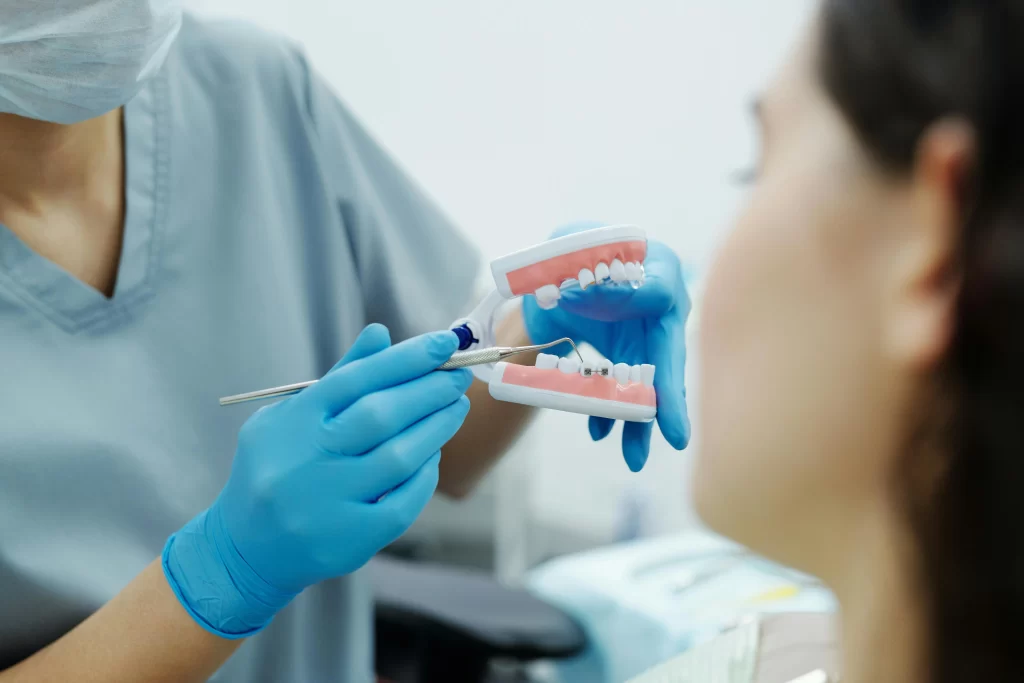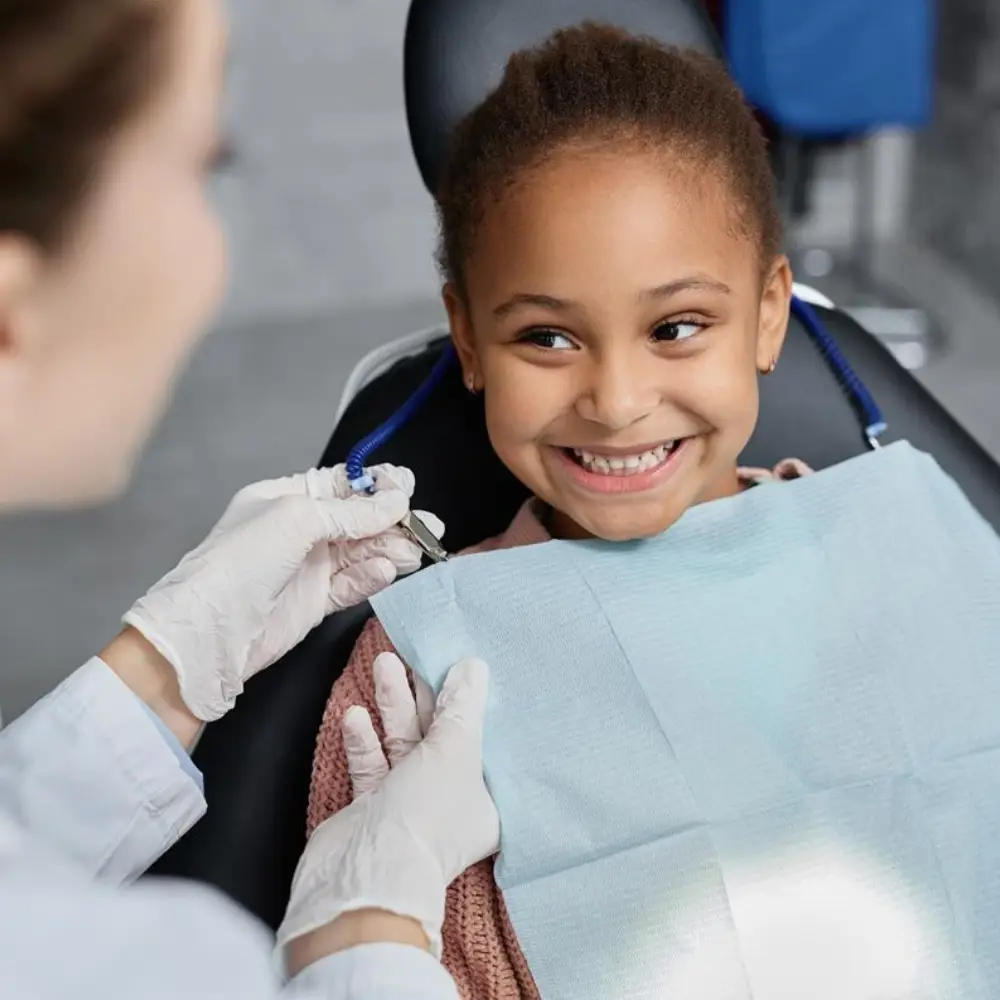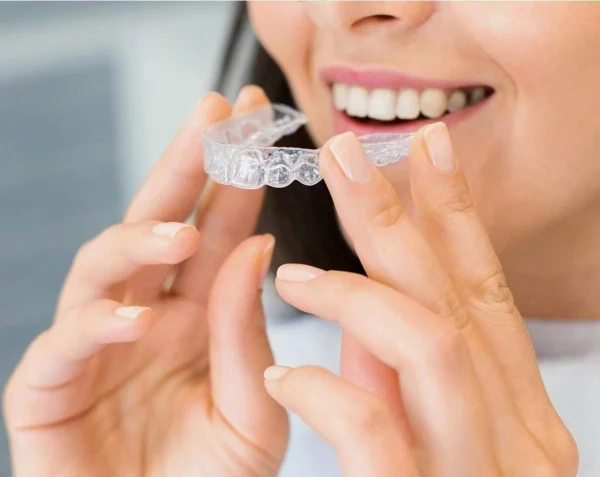The decision to go for Invisalign or traditional braces (or not) is a big one that can affect more than just your smile, confidence and lifestyle. At GP Dental, we know that your choice is not just about straight teeth; the whole point is that it is made of such materials like fabric, crystal, cotton, paper or some wood resource. Whether you’re a teen who is trying out options for the first time, or an adult seeking a discreet fix, this guide will help you make an informed empowered choice.
Understanding the Core Differences Between Braces and Invisalign
Braces and Invisalign both work to straighten your teeth and correct certain bite issues, but they take completely different approaches. Braces use metal brackets and wires that attach to your teeth and are gradually tightened to shift them into place. Invisalign is a series of clear, removable aligners that are custom-made to gradually straighten your teeth.
Braces are noticeable and have been the standard for years, but Invisalign offers a discreet, modern alternative that blends seamlessly into daily life.But let’s dive a little deeper.
Appearance, Comfort, and Lifestyle Compatibility
Invisalign’s ascension desired to rehab the dental routine, and one of its greatest assets is what it looks like or doesn’t. The aligners are almost undetectable, and this is why adults and image-conscious teens prefer them. Braces, however, are visible, although alternatives such as ceramic braces can make them less obvious.
As far as comfort is concerned, the Invisalign is generally less annoying. And because there are no wires or brackets, nothing will poke or scratch your gums and cheeks. And they are removable, which means you can eat, brush and floss easily.
But that’s flexibility you have to be personally responsible for. “You must wear Invisalign aligners for 20–22 hours a day, removing them only for eating, drinking, or cleaning. If you’re someone who may forget to put them back in after eating, braces could be the safer choice.
Treatment Duration and Maintenance Requirements
Ordinarily, the period of both treatments ranges from 12 to 24 months, depending on the nature of your requirements. Invisalign often treats milder cases of imperfection in the oral cavity more rapidly than traditional methods of orthodontia because it enjoys the perks of designing digitally and offering the tooth surface less friction.
The caring of each also differs. Invisalign is a removable, clear device that is meant to be cleaned regularly, otherwise, they can get stained. Braces, on the other hand, have to be cleaned very carefully from the inside and outside, as it is possible that food particles and dirt get caught between the wires and brackets, and these can create unsightly brown spots on the front layer of the teeth which may even complicate the procedure of taking the prints.
Cost Comparison: Traditional Braces vs. Invisalign Aligners

One of the primary factors that influence the decision to opt for braces or Invisalign among most families is the price. Irrespective of the fact that they are both financial commitments to your smile and long-term oral health, there are different pricing components which make noble the comparison of braces vs. Invisalign.
What Factors Affect the Total Treatment Cost?
The normal price of the Invisalign procedure is anywhere between $3,000 and $7,000, in the case of traditional braces the range is usually from $2,500 to $6,000. The cost may go up or down based on which problem of misalignment you have, the period of treatment, and the place of the service.
Occasionally, Invisalign could be dearer in view of innovative technology, computerized design, and ease of use. On the other hand, GP Dental clinic offer a detailed treatment plan and we grant a free consultation so one can know precisely what one will be getting.
Insurance Coverage and Financing Options
Good news – most dental insurance covers both Invisalign and braces. The amount that is covered depends on the respective program, however, it is in general a part of the cost.
GP Dental gladly accepts a majority of insurance policies available and additionally provides installment payment schemes that can be easily adjusted to your budget. It should not happen that you need to make a choice between the state of your wallet and the beauty of your smile. Our staff will be your partner in deciding on the best available treatment so that it is not only reasonable in terms of the cost but also anxiety-free.
Effectiveness by Case Type: Which One Works Better?
Individuals’ dental requirements are highly individualized; a universal solution rarely suffices. Numerous variables determine the most appropriate treatment plan, oral health background, lifestyle choices, genetics, even the extent of a dental issue. Consider teeth whitening: one patient might achieve brilliant results, while another sees minimal change and needs further intervention. These differences underscore the necessity for tailored dental care. Optimal treatment hinges not just on the specific concern, be it misalignment, decay, or discoloration but also on broader factors such as the patient’s comprehensive oral health, personal objectives, and comfort preferences. Standardized approaches simply do not address the complexity of each patient’s needs.
Treating Complex Bite and Alignment Issues
Traditional braces remain the gold standard for severe bite corrections, such as overbites, underbites, and crossbites. The fixed brackets allow orthodontists to make precise, powerful adjustments to move teeth into complex positions.
Invisalign is incredibly effective for mild to moderate crowding, spacing, and alignment issues. With recent innovations like SmartTrack® material and precision wings, Invisalign has become more effective for moderate bite problems too.
Your GP Dental provider will use 3D imaging to determine which solution will give you the best results, both aesthetically and functionally.
Teenagers vs. Adults: Treatment Considerations
By teenagers, Invisalign becomes the preferred option due to its minimally noticeable and handy characteristics; yet, only in case of proper wearing of the aligners. Braces may suit better young teenagers or those kids who need more control over their care.
When it comes to adults, there is an overwhelming preference for Invisalign both in the professional environment and in society in general. The almost transparent trays give them the opportunity to correct their dentition without becoming the subject of a conversation during business meetings, interviews, or gatherings.
Irrespective of age, one’s treatment that aligns with their life, requirements and accomplishments is the best one to go.
Why GP Dental Offers Both Solutions with Personalized Guidance
At GP Dental, we reject the notion of standardized treatment plans or favoring one option over another. Our primary objective is to equip patients with accurate information and foster transparency, enabling them to make decisions that best suit their individual circumstances and aspirations. Whether a patient is evaluating traditional braces or considering Invisalign, our commitment is to provide clear, unbiased guidance rather than promote a particular choice. Our recommendations draw upon the latest advancements in dental technology, combined with a nuanced understanding of each patient’s unique needs. This patient-centric approach ensures that the care delivered is both effective and genuinely tailored to the individual.
Customized Assessments Using Digital Scanning Technology
At GP Dental, we have transitioned away from traditional dental impressions, those awkward, uncomfortable trays filled with sticky substances are a thing of the past. Instead, we employ cutting-edge digital scanning technology that non-invasively captures highly accurate images of your teeth and jaw within minutes. This process enables us to generate an exceptionally detailed 3D digital model of your oral structure, which serves as the foundation for a truly personalized treatment plan. Moreover, we can simulate the anticipated movement of your teeth and provide you with a visual representation of your projected results before commencing any procedures. The process is swift, precise, and entirely pain-free, ensuring you remain informed and confident throughout your treatment journey.
Combining Aesthetics and Function for Optimal Results
At GP Dental, the focus extends beyond mere aesthetics; optimal oral function is considered equally essential. Whether addressing complex issues such as deep bite correction or pursuing cosmetic enhancement through Invisalign, each treatment plan is meticulously developed with durability and efficacy in mind. Patient health and well-being remain central to the clinical approach, ensuring that both appearance and functionality are supported throughout the process. The objective transcends superficial improvements, aiming instead to foster genuine self-confidence through sustainable outcomes. As a result, patients typically report not only satisfaction but also a renewed sense of assurance and pride in their oral health and appearance.
Let’s Build Your Best Smile—Together
It’s not so hard to decide if you want to have braces or use Invisalign for your teeth. In GP Dental, we help you find the right treatment for you and make sure that you understand what we are going to perform to your teeth with certainty and the most advanced solutions. Be it wanting a Hollywood smile or having healthy teeth anonymously, we still have something for you to choose from.
Get the appointment you need today at GP Dental so that you can embark on your journey to a happy and attractive smile that you will forever be proud of.
Frequently Asked Questions (FAQs)
1. Is Invisalign as effective as braces?
Yes, Invisalign is especially effective for treating mild to moderate orthodontic issues, such as minor crowding, spacing, or bite problems. It’s a discreet and comfortable option that appeals to both teens and adults. However, for more complex cases like severe misalignment or jaw discrepancies, your orthodontist may recommend alternative treatments for better results. A thorough consultation helps determine the most effective and personalized solution for your smile.
2. Can I switch from braces to Invisalign mid-treatment?
It is sometimes possible to address dental concerns with Invisalign after previous dental work, such as crowns or bridges, but it depends on your individual case. That’s why the first and most important step is to visit your GP Dental dentist for a personalized evaluation. They’ll assess your current dental health, review past treatments, and determine if Invisalign is a suitable and safe option for your smile goals. With their guidance, you’ll receive the most effective and informed plan for moving forward.
3. Do I have to wear retainers afterward?
Correct. No matter which orthodontic treatment you choose whether Invisalign or traditional braces, you’ll still need to wear retainers afterward. Retainers play a critical role in maintaining your newly aligned smile by preventing teeth from gradually shifting back to their original positions. Skipping this step could undo the progress made during treatment. Wearing retainers as prescribed helps ensure long-lasting, stable results.
4. Is Invisalign painful?
Wearing new aligners can cause mild discomfort during the first few days as your teeth begin to shift. However, this pressure is usually far less intense than the discomfort experienced with traditional braces. Most patients describe it as a feeling of tightness or pressure rather than pain. The adjustment period is short, and as your mouth adapts, the discomfort quickly fades.
5. Can I eat normally with Invisalign?
Absolutely! It’s important to remove your aligners during meals and anytime you drink something other than water. This prevents staining, warping, or trapping food particles, which can lead to odor or even cavities. After eating or drinking, rinse or brush your teeth and gently clean your aligners before putting them back in. Keeping this routine helps maintain both your oral hygiene and the clarity of your aligners.


